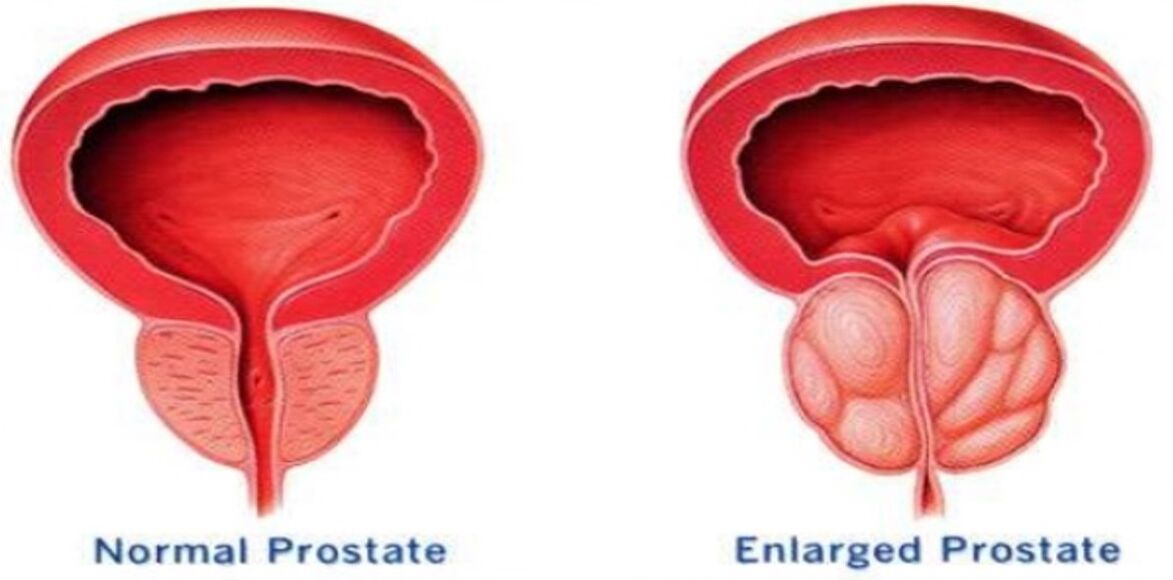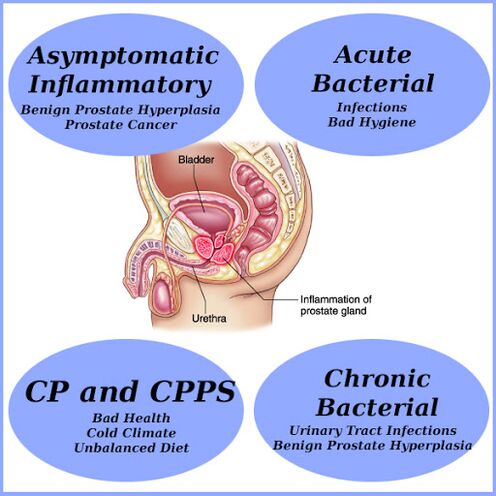Inflammation of the prostate gland (prostatitis) is a common disease that occurs in more than 80% of men after 30 years.The absence of pronounced symptoms and the reluctance to see a doctor leads to dangerous complications and the formation of a chronic form.Regular preventive examinations allow you to identify the disease at the initial stage.IMMA clinics create all conditions for comfortable examination and prostatitis treatment.Competent experts will even help in the most difficult cases.
The characteristics of the structure and the location of the prostate gland determine its exposure to infections and inflammatory processes.The eagerness of the signs and symptoms of prostatitis leads to an imperceptible progression, to complications, to the spread of the affected area to the neighboring organs.Often men try not to notice the manifestation of the disease, do not want to ask for medical help.This behavior contributes to the development of pathogenic processes.The percentage of self-feeding in this case is extremely low.

About the prostate gland
The prostate is one of the most important organs of a man who largely determines the quality of life.
It is a lonely gland located at the bottom of the bladder.It consists of two actions bound by isthmus.The main functions of the prostate:
- The production of liquid, which dilutes sperm, contributes to the creation of favorable conditions for the activity of sperm;
- controls urination.The prostate adjacent to the urethra and fulfills the functions of the sphincter;
- Protects the bladder from an ascending infection.
Any gland disturbance will cause problems in the genital area, urination processes.This leads to a sharp decrease in quality of life.The timely treatment of prostatitis in men will avoid many complications, will maintain sexual activity for many years.
Symptoms of the disease.What to look for?
Prostatitis in men can occur in two forms: acute and chronic.
Acute prostatitis is characterized by the following clinical image:

- The poisoning of the body, accompanied by an increase in temperature of more than 38 degrees, total weakness, nausea;
- Severe pain in the inguinal region, giving to the lower back;
- Difficulties of urination and defecation.
The state of the patient in this case requires urgent hospitalization and treatment for hospitalized patients.In most cases, the disease is completely healed.
The symptoms of chronic or stagnant prostatitis are divided into groups:
- pain;
- violations of sexual activity;
- Problems in the process of urination.
Manifestations of pain at the initial stage of the development of the disease are erased, can occur in an unpredictable manner and disappear.Located at the bottom of the abdomen, spreading to the lumbar and the genitals.The intensity can be low, so the patient may not pay attention to the problem.
Important!Pain in the bottom of the abdomen can be a sign not only of prostatitis, but also other diseases of urinary sex systems and intestines.
The problems that have occurred are one of the main symptoms of stagnant prostatitis.Their manifestations are summed up with the following:
- decrease in sexual attraction;
- "Erased" orgasm, lack of lively sensations;
- reduced erection or absence;
- pain during ejaculation or ejaculation;
- Increased unreasonable night erection.
The worsening of problems is facilitated by the psychological state.A man begins to avoid sexual contact, a feeling of anxiety, fear, uncertainty occurs.A negative emotional environment improves signs of sexual dysfunction.
The work violations of the urinary system are particularly unpleasant.In the early stages, there is a slight delay in the urine when urinating it, then the symptoms are improved, pain and sculpture, a feeling of fullness of the bladder, frequent desires appear.Such manifestations are explained by the fact that the enlarged prostate begins to put pressure on the bladder and urethra.
The particularity of the manifestation of these characteristics must be taken into account: the increase in symptoms can stop.For a while, the problem is not felt by the patient.This phenomenon is explained by the compensatory reaction of the bladder muscles.After a short break, the manifestations of the disease return, more often, have greater intensity.
The development of chronic prostatitis in men can occur imperceptibly for several months.Later, identification threatens complications, requires the involvement not only of drugs, but also surgical treatment methods.
Important!The stagnation of prostatitis often passes asymptomatic.To identify the disease in the early stages, when it is easier to treat, it is necessary to regularly undergo preventive examinations.
The nature of the disease.Risk factors

Symptoms and treatment of prostatitis depend on the true nature of the disease.Two main causes are distinguished: the infectious lesion and the occurrence of the inflammatory process.
The proximity of the prostate gland to the bladder and the urinary channel, the intestines lead to the penetration of the causal agents of the infection in the tissue of the gland.A healthy organism with strong immunity is capable of successfully resisting infection.The prostate becomes a protective barrier for upward infections capable of impressing the urinary system.Following an unhealthy lifestyle and stagnant processes in the basin, this function is weakened.
The pathogenic organizations fall into the prostate along the uphill path of the penis, descending from the bladder, through blood and lymph.The main sources of infection:
- The most dangerous infections are interchangeable.Usually they proceed asymptomatic and cause a great pain in the body;
- cystitis;
- colitis;
- systemic infections;
- Complications Arz, for example, complications of bronchitis.
The main causes of prostatitis are associated with bad way of life.Heredity and congenital predisposition are rare cases.
The characteristics of the structure of the vascular system lead to stagnant phenomena in the basin, the blood begins to go wrong, the tissues do not obtain the required amount of oxygen, due to their resistance to diseases, it decreases.In addition, the secret of the prostate itself can accumulate, which causes inflammatory processes.
The stagnation of prostatitis occurs for the following reasons:
- Congenital characteristics associated with the structure of blood vessels, insufficient, weak venous valves;
- injuries, including damage to the spine and spinal cord;
- Hypodynamia;
- vertebral diseases;
- varicose veins, hemorrhoids;
- bad habits;
- hormonal violations;
- excess body weight;
- violation of salt balance.
Violations in the hormonal background cause changes in the prostate gland: an excess of testosterone causes its increase and altered functioning.
Bad habits cause damage to the vascular system.Alcohol causes a narrowing of small vessels and nicotine leads to the wilting of ships.A bad blood flow contributes to the development of pathological phenomena in the organs, weakening their protection functions.
Hypodynamia, or a sedentary lifestyle, sitting or standing work leads to the stagnation of the liquid in the basin, the veins experience an increased load, therefore, the varicose veins are developing, the body protection functions are reduced, various diseases begin to develop, including the inflammation of the prostate gland.
With frequent diarrhea, colitis, insufficient consumption of liquid, a deficiency in the body of potassium, a violation of the balance of water salt occurs, which negatively affects the state of the prostate gland.
The causes of infectious prostatitis are loose sexual behavior, frequent change of partner, low immunity, complications of general infections, hypothermia.
Statistics show the rejuvenation of the disease: signs of prostatitis are recorded in young men and adolescents.This is facilitated by wearing close clothes and a linen, frequent hypothermia.
Diagnostic measures
On examination, the doctor, suspecting the prostatitis, questions the patient and performs a rectal examination of the prostate.The procedure does not take much time and is painless.The patient sets to the side, the doctor introduces the index into the rectum.The location close to prostate and the intestines allows you to assess your condition.An increase in the gland, pain during pressing are signs of prostatitis.
To confirm the diagnosis, blood and urine tests are carried out, including the presence of a bacterial infection, an ultrasound of the pelvic organs;Study of prostate secretions, an analysis of the hormonal context.
The main treatment methods
The main method of processing prostatitis is drug treatment.Depending on the cause identified, antibiotics are prescribed to combat pathogens of infection or anti-inflammatory drugs.
They complete the main treatment diet with vitamin complexes, drugs that strengthen blood vessels, hormonal drugs, if necessary, immunomodulators.The therapeutic effect is exerted by physiotherapy.
Sometimes a prostate massage lesson is prescribed, which eliminates stagnation, helps restore the active work of the organ and improves blood supply.Patient exams indicate the effectiveness of this type of treatment.The procedure does not take more than five minutes.Massage is the most effective in the treatment of chronic and stagnant prostatitis.
Important!Prostate massage has a number of contraindications.In acute prostatitis, purulent inflammation, malignant tumors, this type of treatment is contraindicated.
Surgical intervention is only possible in extreme cases and is generally carried out in advanced age patients, because after the excision of the affected part of the gland or when it is completely removed, a certain number of serious side effects may appear:
- infertility;
- sexual dysfunction;
- urine incontinence;
- Hormonal violations.
A timely treatment will allow you to quickly face the symptoms of prostatitis, to avoid the complications of life and healthy complications.
Preventive measures
One of the main conditions of remission of stagnant prostatitis is a healthy lifestyle.Drug treatment will help eliminate symptoms, but if you do not eliminate real causes, a relapse of the disease can be observed for a long time.To maintain health, to avoid chronic diseases, these recommendations must be followed:
- Lead a regular sex life with a single partner;
- Appropriate nutrition, rejection of fat, salty, fried;
- moderate physical activity;
- Compliance with the day's diet, healthy sleep;
- Refusal of bad habits.No matter how familiar it may seem, alcohol and nicotine affect the body as a whole as a whole.
- Avoid tremors, with a long stay while driving, take breaks, hot ups.
What can we do?
To avoid the development of the chronic form of the disease and possible complications, it is necessary to undergo a preventive examination of the urologist twice a year.It is important to be responsible for the choice of clinics and a doctor.The asymptomatic course of the disease requires careful examination, conducting a set of research.
A regular visit to the doctor will not take much time, but will help maintain men's health for many years.































